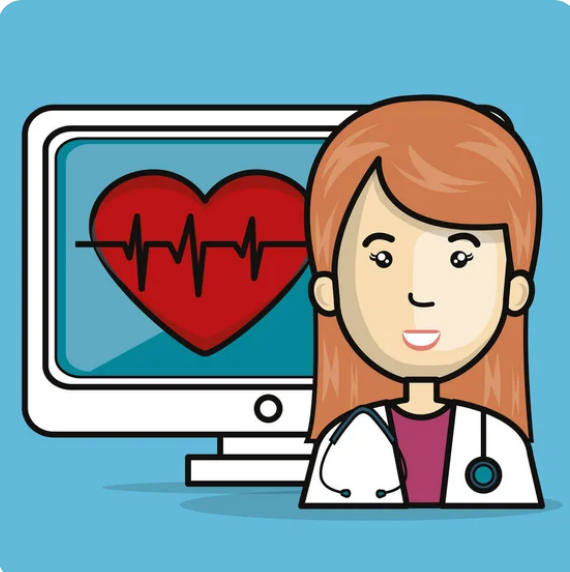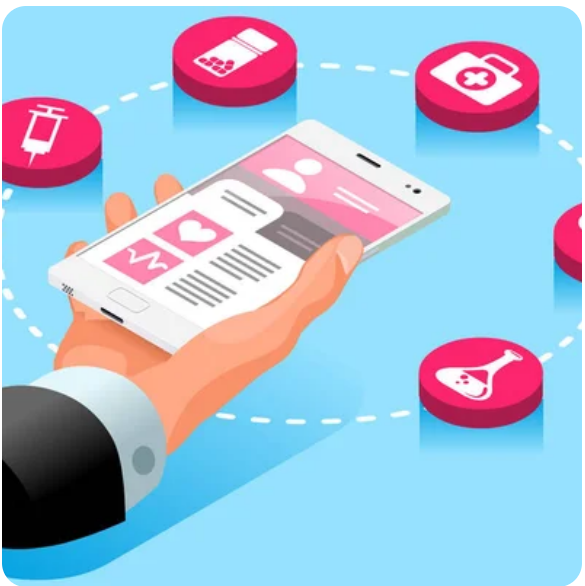The Toolkit - Inform - Perspectives on eHealth literacy - A caregiver's perspective
- Motivation is key
- Providing interfaces with other medical applications and health care providers is beneficial
- Support at every stage is necessary
- Health- and medical information provided should be evidence-based
- The financial resources of the end user should always be kept in mind
- eHealth applications should be designed in an inclusive, accessible and non-discriminatory manner
Especially considering people with a low eHealth literacy, it should be taken into account that if an app is not designed in a way to navigate intuitively with, the inexperience and anxiety of using new digital applications, can lead to vulnerable target groups not taking advantage of the potential benefits the application could offer to them.
“Just keep it simple.” (Neurologist)
Not all users have the same access to money, physical prerequisites, internet connection (rural vs. urban areas), language skills, support from relatives, etc.
A software could potentially be highly beneficial (if used correctly) for the health of the user, but if the costs of acquiring and implementing the application are too high, it will not be bought and/or used. Also, especially elderly people can struggle with the operation of technical devices because of issues with sight, motor skills and other problems (e.g. the skin becomes drier with age and makes it more difficult to use touchscreens).
To develop an application with a strong focus on inclusivity, accessibility and non-discrimination, a good starting point hereby, should be the use of simple language.
“The language used is an important factor. The content has to be easily understandable.” (Social Worker)


Regarding inclusivity, the experts furthermore state the importance of considering the topic of gender when creating content (e.g. different physiology).
Consistency of developed eHealth solutions is considered substantial in order to ensure its longtime use. Sudden changes in the interface of an application can be overwhelming and can cause people to stop using it any further.
To counteract overwhelm and anxiety in connection with a new technology and ensure long-term motivation for use, health professionals also view the adaptability of the service (e.g. in terms of personal data, color- and music preferences or additional health-information) as important, as not all users might want to use all functions that are available in the application.
Motivation (particularly a feeling of success) as well as including motivational elements in the health application is seen as essential by health professionals.
“A sense of accomplishment is necessary for the patients, like using a smiley in the app, when a job is well done. This always goes down well” (Nurse)
Also, gamification can lead to a higher motivation to engage with health applications, especially if serious-games elements enable more inexperienced clients/patients with a low eHealth literacy to familiarize themselves with the new digital content. This can be achieved by using avatars, mascots who are supporting the navigation, as well as enabling peer-activities in the digital environment (e.g. group challenges).
Besides from in-app support it should always be clear on where to turn to in order to receive support (i.e. technical or software support) when it is needed.
“Also, it is very much depending on how much support can be given. The more support, the more confident the user is. There is a certain technology fear or barrier to engage new technologies.” (Developer)
“Yes, I think that support is a major issue. It happened to us, too. There is an app that you download, you really like the app at first, until you encounter a problem and you do not know whom to turn to in order to get help.” (Physiotherapist)
Providing interfaces to other programs is another important factor. Health-related applications can be deemed as more useful by the user, if the data collected using the app (e.g. blood-pressure, blood-sugar-levels), can be shared with professional and other health-related personnel, always taking into account data-privacy issues.
In general, the importance of a differentiation between applications and tools used for health-related leisure activities and medical applications which are being used as a support for medical treatments is emphasized. This differentiation is highly relevant due to safety-related reasons where medical applications are concerned. The professionals recommend collaborating with the state in order to work on certificates clearly indicating the quality of an eHealth application.
When it comes to medical information provided for the user within an app, it is of the utmost importance to clearly state where the information is coming from. The patient/client should always be made aware of the source of the information and the users should feel assured that they can trust the health and or medical information they are provided with.
“The information should be evidence-based and state-of-the-art.” (Nurse)
When it comes to introducing new eHealth technologies to the patients, experts emphasize the importance of taking it slow and to focus on a bottom-up-approach. A positive word of mouth amongst the users, after slowly familiarizing them with a new eHealth solution – health professionals recommend face-to-face workshops for this – can strongly enhance the acceptance.
“I try not to motivate but to educate. In my experience, this helped not more but with a longer effect.” (Psychologist)